Basic Information
Description
Biocytogen developed the B-NDG hCSF1/hTHPO mice in which we replaced the gene encoding mouse Csf1/Thpo by its human CDS region. This mouse combines a B-NDG mouse background and expresses human hCSF1/hTHPO protein, will become a suitable animal model to investigate development and function of human macrophage cells without irradiation treatment.
-
Targeting strategy

-
Gene targeting strategy for B-NDG hCSF1/hTHPO mice. The full sequences of mouse Csf1, Thpo genes except the UTRs were respectively replaced with the coding sequences (CDS) of human CSF1, THPO genes.
-
Protein expression analysis

-
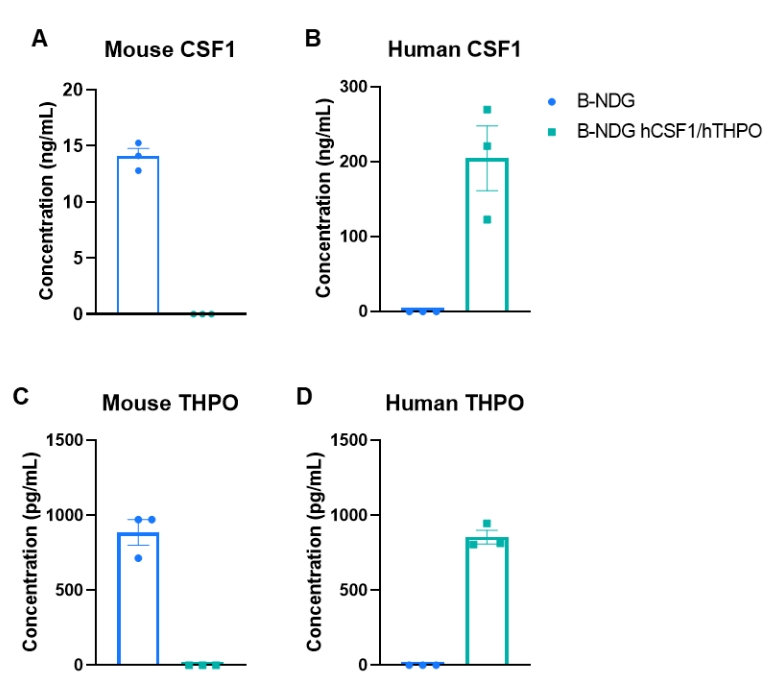
Strain specific CSF1 and THPO expression analysis in B-NDG mice and homozygous B-NDG hCSF1/hTHPO mice by ELISA. Serum were collected from B-NDG mice and homozygous B-NDG hCSF1/hTHPO mice stimulated with LPS in vivo, and analyzed by ELISA with species-specific CSF1 and THPO antibodies. Mouse CSF1 and THPO were only detectable in B-NDG mice (A, C). Human CSF1 and THPO were exclusively detectable in homozygous B-NDG hCSF1/hTHPO mice but not in B-NDG mice (B, D).
-
Engraftment of human CD34+ HSCs in B-NDG hCSF1/hTHPO mice to reconstitute human immune system (adult mice)

-
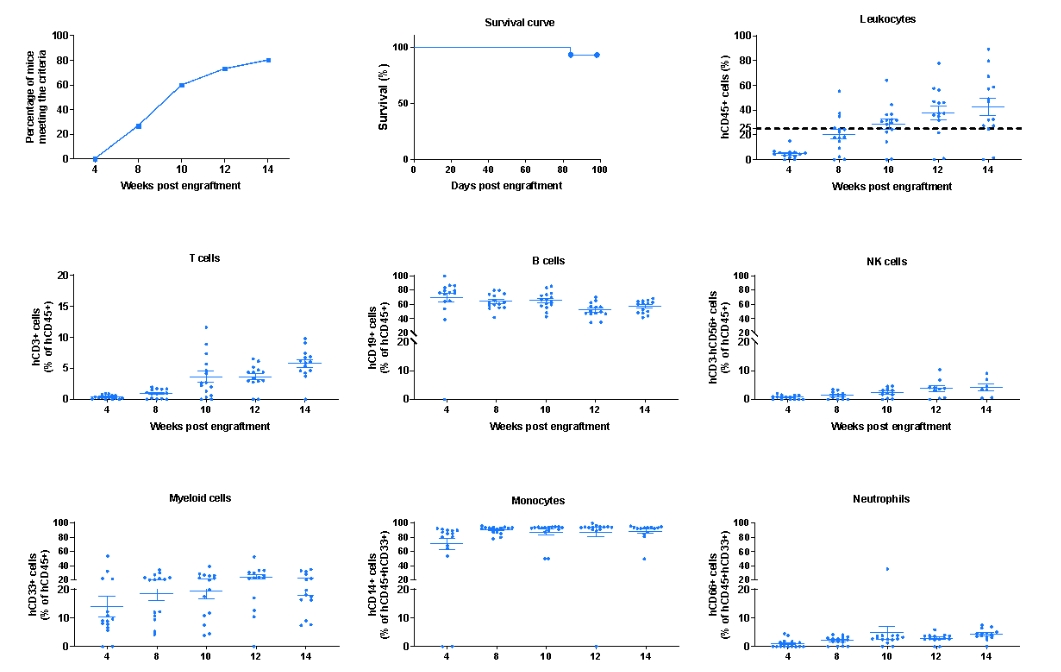
Human CD34+ HSCs (hematopoietic stem cells) (1.5 × 105) were intravenously injected into homozygote B-NDG hCSF1/hTHPO mice (female, 6 week-old, n=15). Representative flow cytometric analysis of peripheral blood lymphocyte from mice after engraftment with human CD34+ HSCs. Human multi-lineage cells, including T, B, NK, myeloid cells, monocytes and neutrophils were successfully reconstituted. Our results suggest that the human HSCs engrafted humanized mouse model was successfully constructed.
-
Engraftment of human CD34+ HSCs in B-NDG hCSF1/hTHPO mice to reconstitute human immune system (neonatal mice)

-
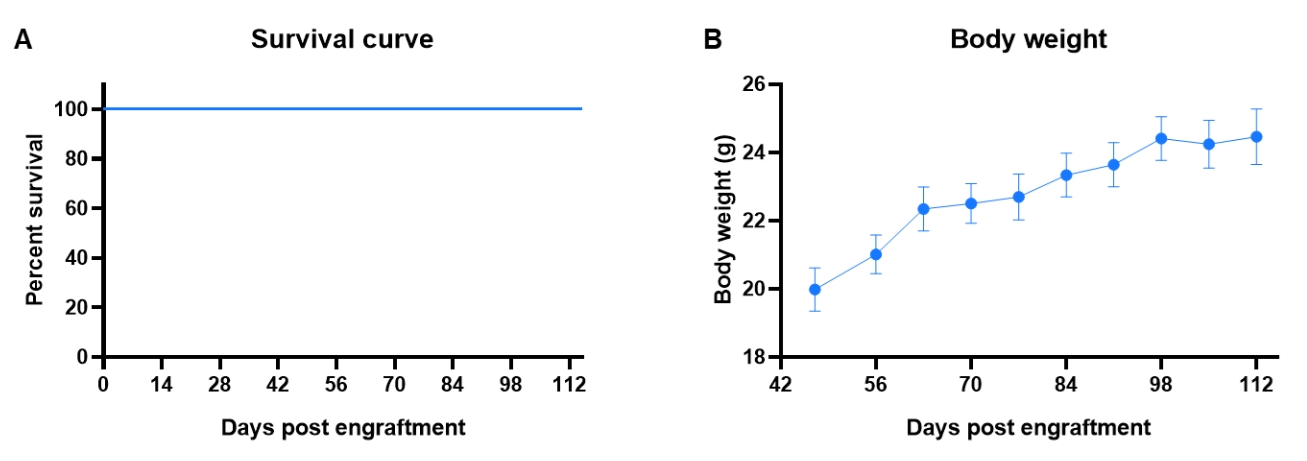
Human CD34+ HSCs (3 × 104) were intravenous (temporal vein) engrafted into homozygous B-NDG hCSF1/hTHPO mice (female, 24-48 hr after birth, n=11). A. Survival rates of the mice were analyzed with Kaplan Meier survival curves. B. Body weight. Results showed that the survival rate of B-NDG hCSF1/hTHPO mice was 100% after engraftment of human CD34+ HSCs for 16 weeks. The body weight of B-NDG hCSF1/hTHPO mice was increased steadily during the whole reconstitution. Values are expressed as mean ± SEM. HSCs: hematopoietic stem cells.
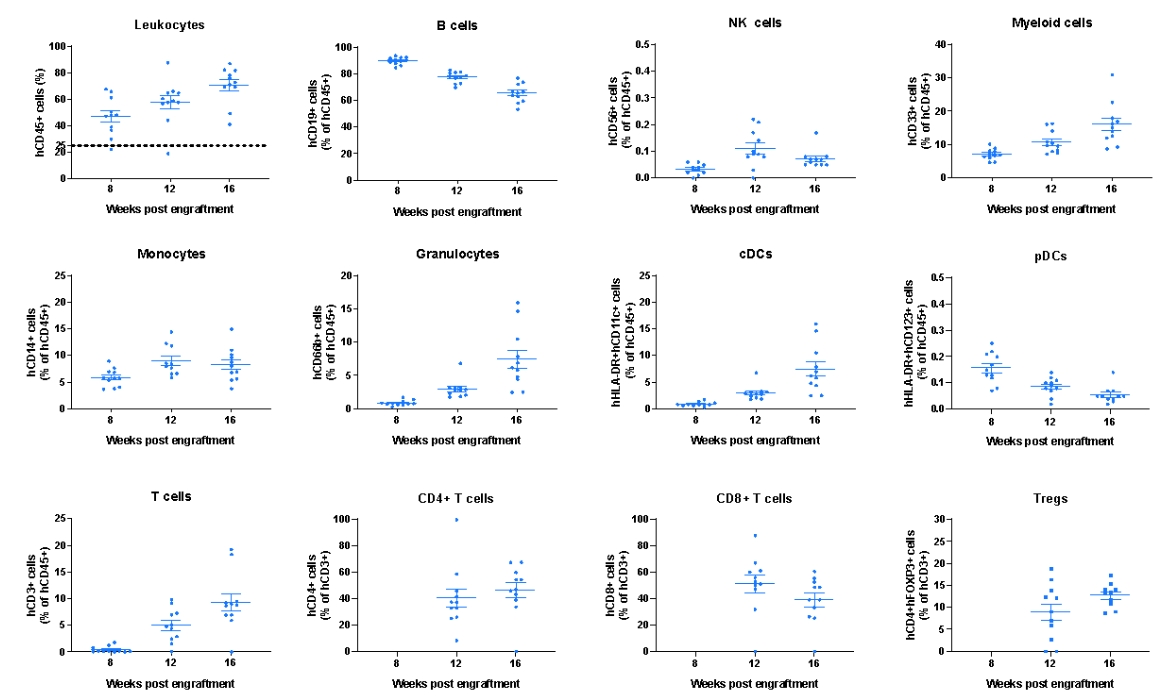
Human CD34+ HSCs (3 × 104) were intravenous (temporal vein) engrafted into homozygous B-NDG hCSF1/hTHPO mice (female, 24-48 hr after birth, n=11). The frequency of human immune cells in peripheral blood was analyzed by flow cytometry. Results showed that multi-lineage of human cells, including T, B, NK, myeloid cells, monocytes, granulocytes, cDCs, pDCs, Tregs were reconstituted. Values are expressed as mean ± SEM.
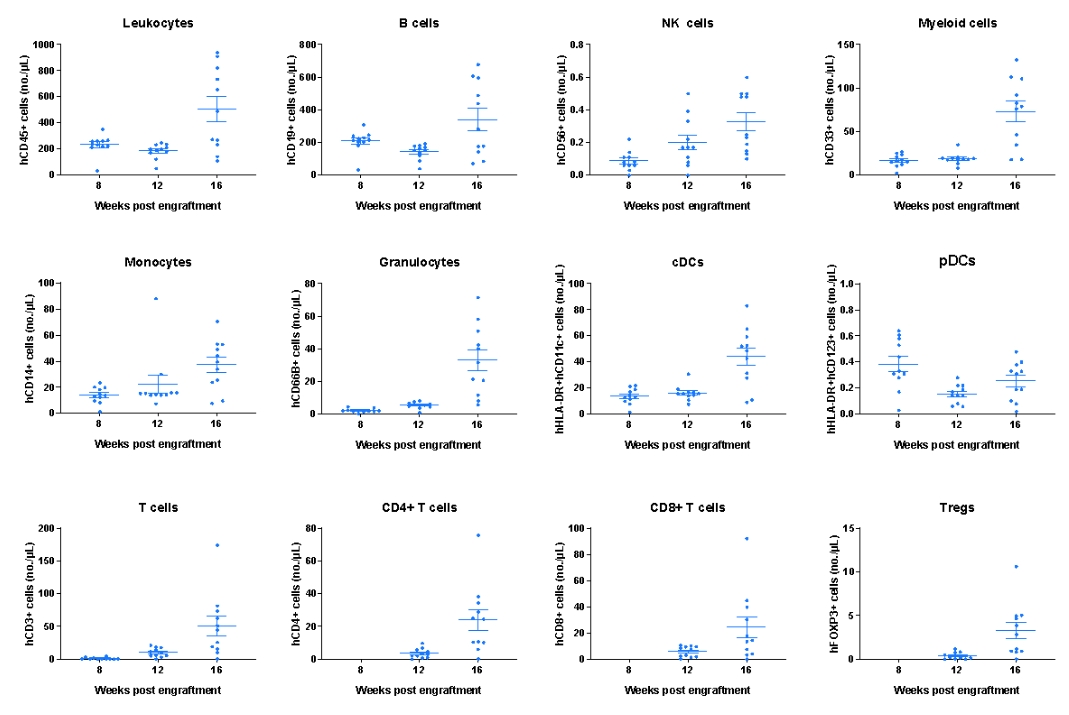
Human CD34+ HSCs (3 × 104) were intravenous (temporal vein) engrafted into homozygous B-NDG hCSF1/hTHPO mice (female, 24-48 hr after birth, n=11). The absolute number of human immune cells in peripheral blood was analyzed by flow cytometry. Results showed that multi-lineage of human cells, including T, B, NK, myeloid cells, monocytes, granulocytes, cDCs, pDCs, Tregs were reconstituted. Values are expressed as mean ± SEM.
-
Summary

-
Protein expression analysis:
Mouse CSF1 and THPO were only detectable in B-NDG mice. Human CSF1 and THPO were exclusively detectable in homozygous B-NDG hCSF1/hTHPO mice.
Human CD34+ HSCs engraftment for human immune system reconstitution
Multi-lineage of human immune cells can be reconstituted in adult and new born B-NDG hCSF1/hTHPO mice after engrafted with human CD34+ HSCs.


